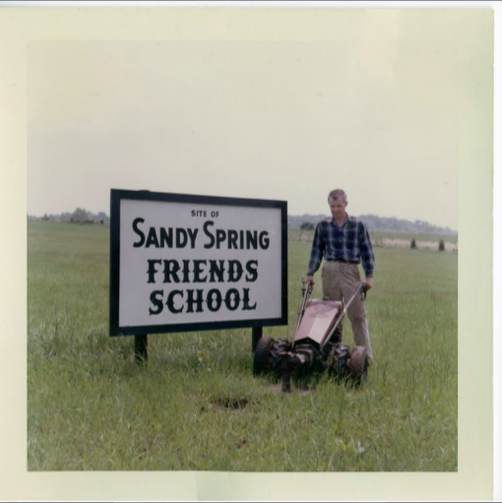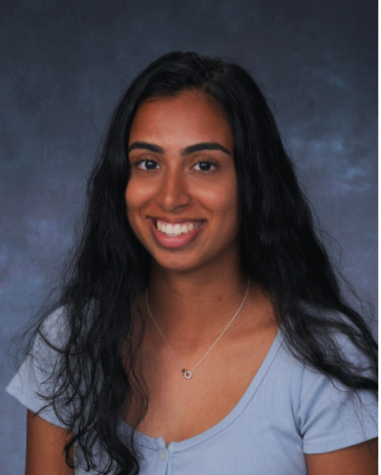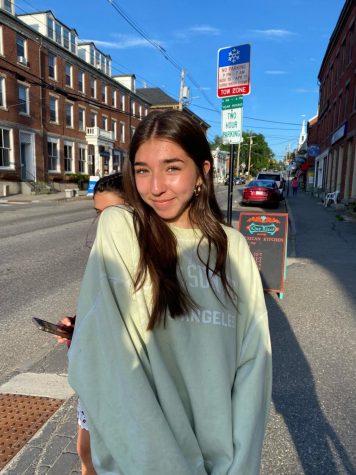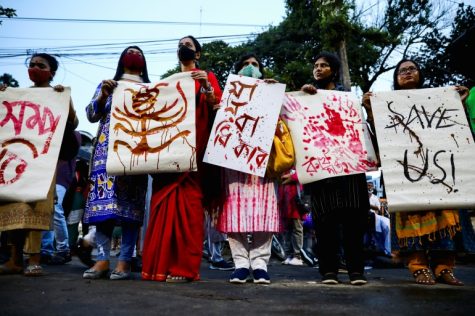The evolution of Sandy Spring Friends School

May 24, 2022
As any institution would, Sandy Spring Friends School has evolved significantly since its founding in 1961. Changes involving the size of the community, traditions, the role of Quakerism, and more, have shaped the school into the influential establishment it is today. As “lifers,” students who have attended Sandy Spring Friends all thirteen to fourteen years, we want to share our experiences and thoughts surrounding the evolution of SSFS in our time here. Additionally, we interviewed two alumni, Tim Hussman, class of 1977, and Kwame Darko, class of 1998, to develop a broader understanding of the changes Sandy Spring has faced throughout its time.
Tim Hussman, class of 1977, remains an active member of the Sandy Spring Friends community as the father of one current student and one alumna. He was a member of the inaugural ninth grade class at the school in 1973, as SSFS was limited to grades ten through twelve for its first twelve years. The middle school was later added in 1980, followed by the lower school in 1992. Tim explained that the only buildings on campus were Moore Hall, Westview, Tanglewood, Clifton, and the infirmary in Hartshorne. With such a small student body, despite there being a limited number of clubs and teams, Tim highlighted that “everybody participated in something.” He remembers playing Morley Games during the day like “Friedelfrappe,” “Frazleerham,” and “Brindledorph,” created by former SSFS faculty member Barry Morley. He was also a member of the lacrosse team his sophomore year, coached by the iconic Ari Preuss. In the spring, every student was required to partake in a Gilbert and Sullivan operetta in some capacity, and Tim remembers singing in the chorus. One continuing Sandy Spring tradition he and his classmates participated in were intersession trips. Whether it was sailing on the Chesapeake Bay or traveling with Ari Preuss to Oaxaca, Mexico, Tim said that “intersession was a favorite” of the traditions. During his time as a student, there was a significantly larger Quaker presence in the Sandy Spring area, as well as on campus with daily Meeting for Worship at the Sandy Spring Monthly Meeting House. Though Tim’s current perspective is mostly drawn from his daughters’ experiences, he has noticed a shift from the “counterculture” attitude of Sandy Spring Friends in the seventies, to a more “mainstream” one. “Known as the hippie school,” SSFS was different from many other schools at the time, and didn’t partake in common traditions like homecoming or prom, which have since been adopted. One continuity that Tim emphasized is the accepting nature of Sandy Spring Friends School. While he mentioned that the notions of diversity and inclusion usually were not explicitly acknowledged like they are today, the school has always been an incredibly welcoming community, which is essential to Quaker practice.
Kwame Darko graduated from Sandy Spring Friends School in the class of 1998, and has now returned to work at the school as both a math teacher and the head of the boarding program. He is also the father of two current Lower School students. By the time he was a student, the school had progressed to all three divisions – Lower, Middle, and Upper Schools. Similar to Tim, Kwame explained to us that he feels as though “back then, you were part of everything.” He participated in the soccer, basketball, and lacrosse teams, was part of the operetta, and even danced in competitions at The Madeira School in Virginia. Sandy Spring Friends traditions are what connect current students to the students in Kwame’s class; many traditions he fondly described like intersession, the annual end-of-school “cowbake,” and the “sophomore olympics,” though limited in the past few years due to the COVID-19 pandemic, remain in the community. In terms of prominent changes, Kwame mentioned that the sheer size of the community has grown enormously, and that “the Upper School alone dwarfs the entire school by at least one hundred students” since he attended Sandy Spring Friends. With this significant increase in numbers, there are many more voices that must be heard, and while Kwame absolutely referred to this as a positive change, he also mentioned that this begs the question: “what is the true essence of Sandy Spring?” With the spike in the size of the student body, there has been a simultaneous decline in the critical mass of Quaker students and faculty members. Kwame informed us that when he attended the school, Meeting for Worship was a more sacred time for SSFS students, which has been lost over time as the Upper School became too large for the meetinghouse on campus and had to move to the Performing Arts Center. Additionally, at the time, students engaged in Meeting for Worship with the Sandy Spring Monthly Meeting every week, a tradition that is no longer in practice.
With various obstacles such as the COVID-19 pandemic and transitioning into the new Upper School building, our experiences as SSFS students have certainly changed over the past fourteen years, as well. Growing up in the Lower and Middle schools, we attended Meeting for Worship once a week with our division, in the meetinghouse on campus. As mentioned before, the Upper School has transitioned to the Performing Arts Center to accommodate the growing student body, but in recent years, meeting has been separated by grade or even virtual due to COVID-19 restrictions. In addition, there is no longer a required course on Quakerism for new students. We feel that these transitions have caused a decline in connection to Quaker philosophy at the school.
Over the years, we have also noticed an evident lack of participation in once-popular traditions. There may be numerous factors that contribute to this dimunition, such as the pandemic, the growing number of students, the loss of longtime faculty members and families, and simply the natural decline in tradition over time. While we have understandably lost intersession trips, all-school assemblies, and various other traditions amidst the coronavirus, other simpler traditions have not reemerged since we returned to in-person school. Among these, “Simple Meal,” a monthly replacement of usual lunch options with rice and beans, allowed the school to save money and donate it to those in need. Another event we have not held recently is the “Empty Bowl” dinner. In the months leading up to Empty Bowl, students and community members gathered to craft and decorate ceramic bowls to be sold at the dinner, and families would donate ingredients for the soups served. All of the money raised was then donated to various organizations to combat food insecurity. As longtime participants in such events, we believe that the school should work to reinstate these traditions to contribute to the wellbeing of our greater community, and the strength of our foundational Quaker beliefs.
Inevitably, Sandy Spring Friends School has evolved over its sixty years. As both Tim and Kwame reflected on the changes they have witnessed as members of the community, we acknowledge that present and future shifts in the institution are natural. As graduating and life-long members of the SSFS community, we hope that the school continues to meet the needs of the progressing community it serves, while still maintaining the core principles of Quaker testimony.







Leah Niepold • May 26, 2022 at 12:37 pm
Thank you, Richa and Lilli, for this summary of the history of SSFS and personal experiences! I hope we can resume summer service trips in the future, they have been central to my experience as a teacher here. I am very glad that we have held on to the ‘senior buddy’ program the best we could during the pandemic, it has always been one of my very favorite traditions.
Eduardo Polón • May 25, 2022 at 5:16 pm
This is an important piece of writing, as it does an admirable job of preserving critical institutional memory.